The current situation which we are facing requires us to think about future arrangements for workspaces. Teleworking which was once more reserved for the self-employed, has become within a few weeks the modus operandi for the majority of professionals. The social distancing requirements simply go against our Western culture, and what is more, that of organizations which promote innovation through continuous collaboration between their work teams.
It is clear that videoconferences have their limits and with the passing weeks, employee engagement and mobilization is crumbling; we already know that it is difficult to consolidate a strong corporate culture and employer brand with all of our teams working remotely. A return to normal is therefore expected and inevitable.
This return of teams to the workplace must be carefully considered and planned. The last thing we would want to do is create more uncertainty and stress within our teams. Organizations will need to fully rely on the strength and talent of their employees as the road ahead will be long and steep.
Employee health and safety will therefore be at the heart of all priorities. But how will it be possible to organize environments according to this priority when open areas are legion in large organizations?
First, we need to consider that the level of vacancy in workstations and meeting rooms may be higher due to various factors, including temporary layoffs, work sharing and the teleworking mode that will be maintained for some employees. This context could give way to the possibility of rearranging work spaces to encourage distancing.
And here are some solutions to help rethink your office layouts:
120 degree workstations
These workstations had lost some of their popularity in open-plan layouts, however they offer a lot of privacy and help reduce distractions by somehow creating blind walls. Furthermore, the 120 degree workstations provide a design distance of at least two meters.
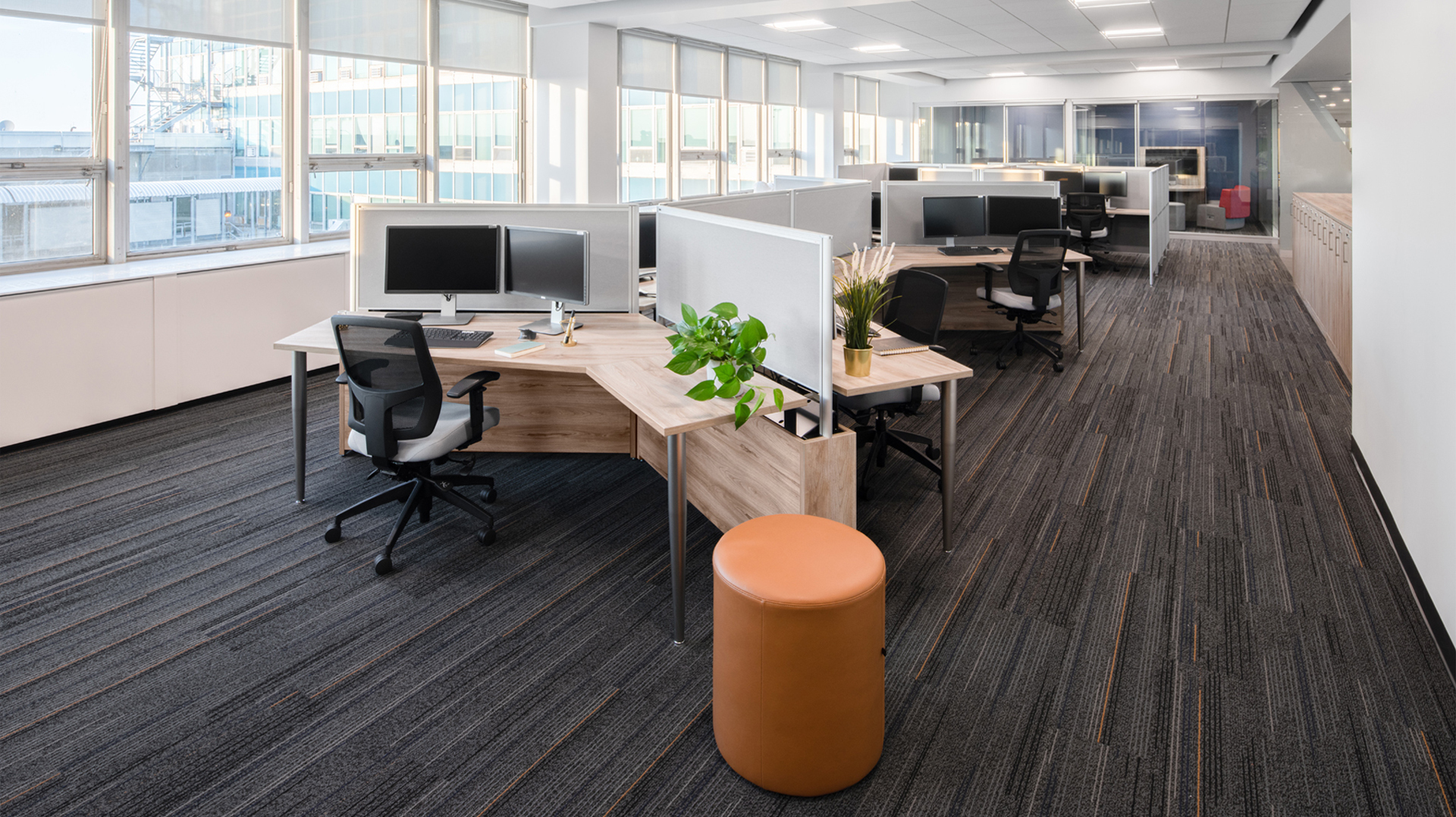
Montreal Airport, photo by David Boyer
Privacy screens
Privacy screens could prove to be the solution of choice for open space offices as they promote a physical separation while creating a protection barrier in high traffic areas. They must be chosen in a laminate or an acrylic finish since these are easier to clean.
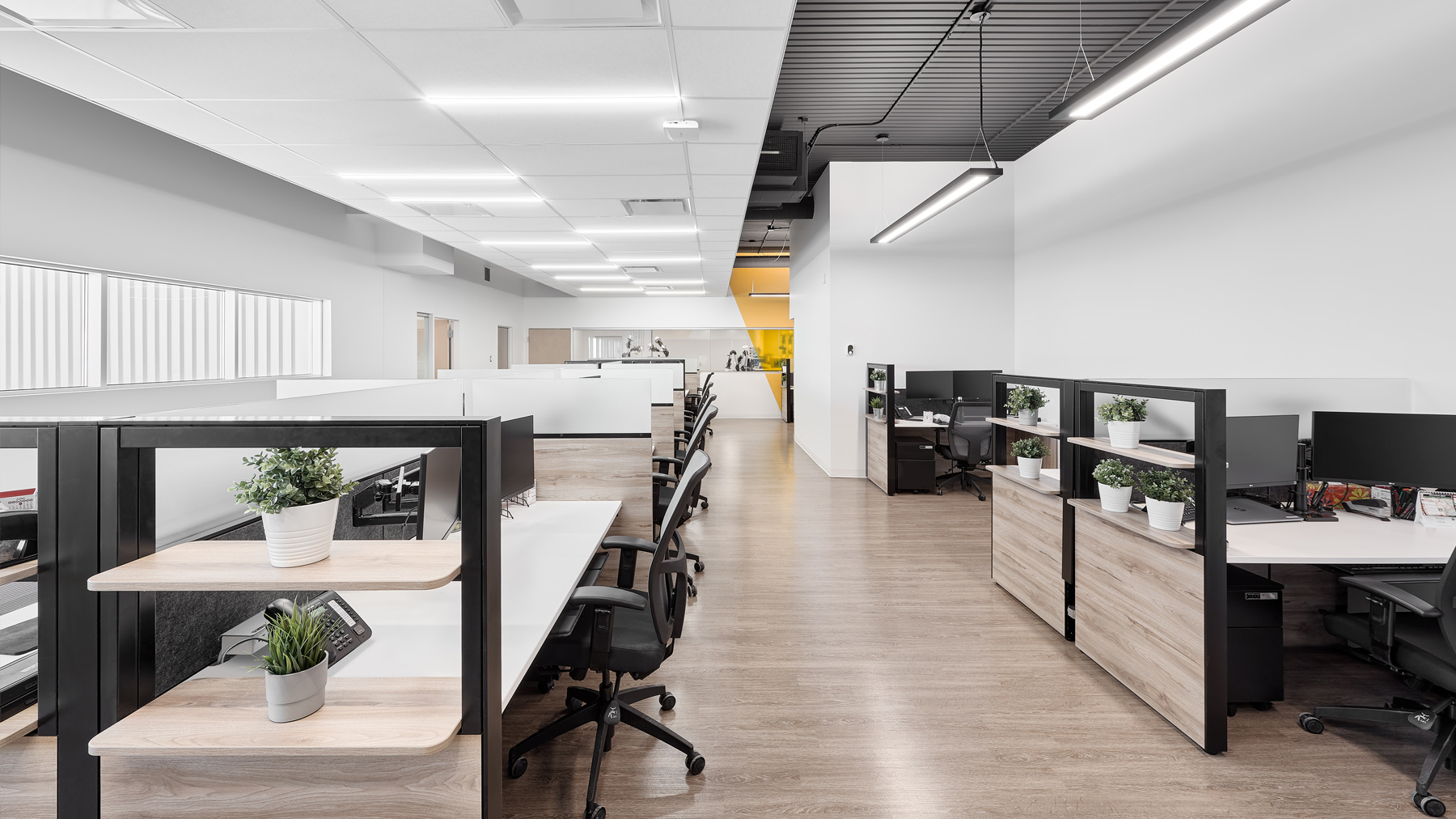
Ver-Mac, photo by Charles O’Hara
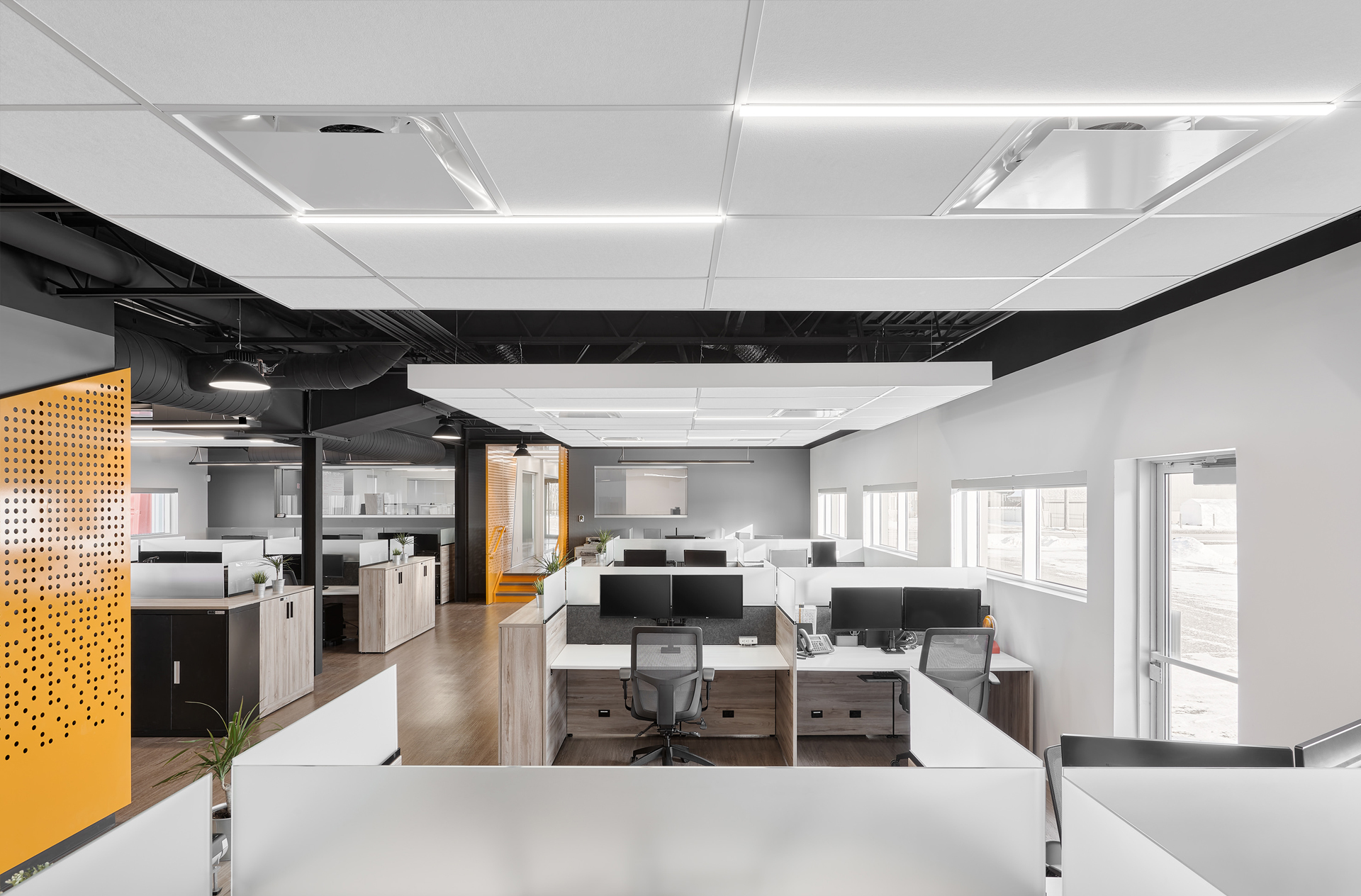
Ver-Mac, photo by Charles O’Hara
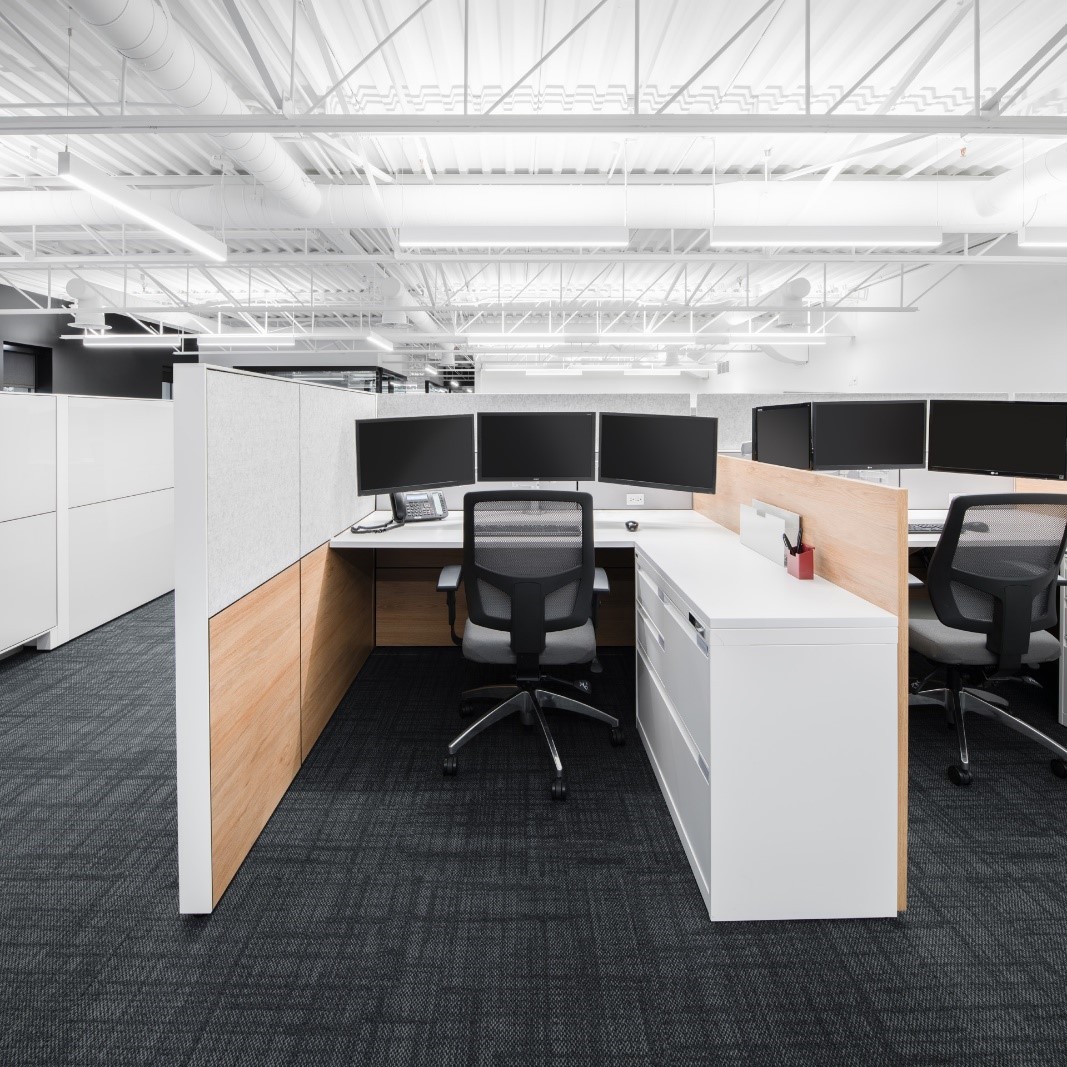
Artopex Head Office, photo by David Boyer
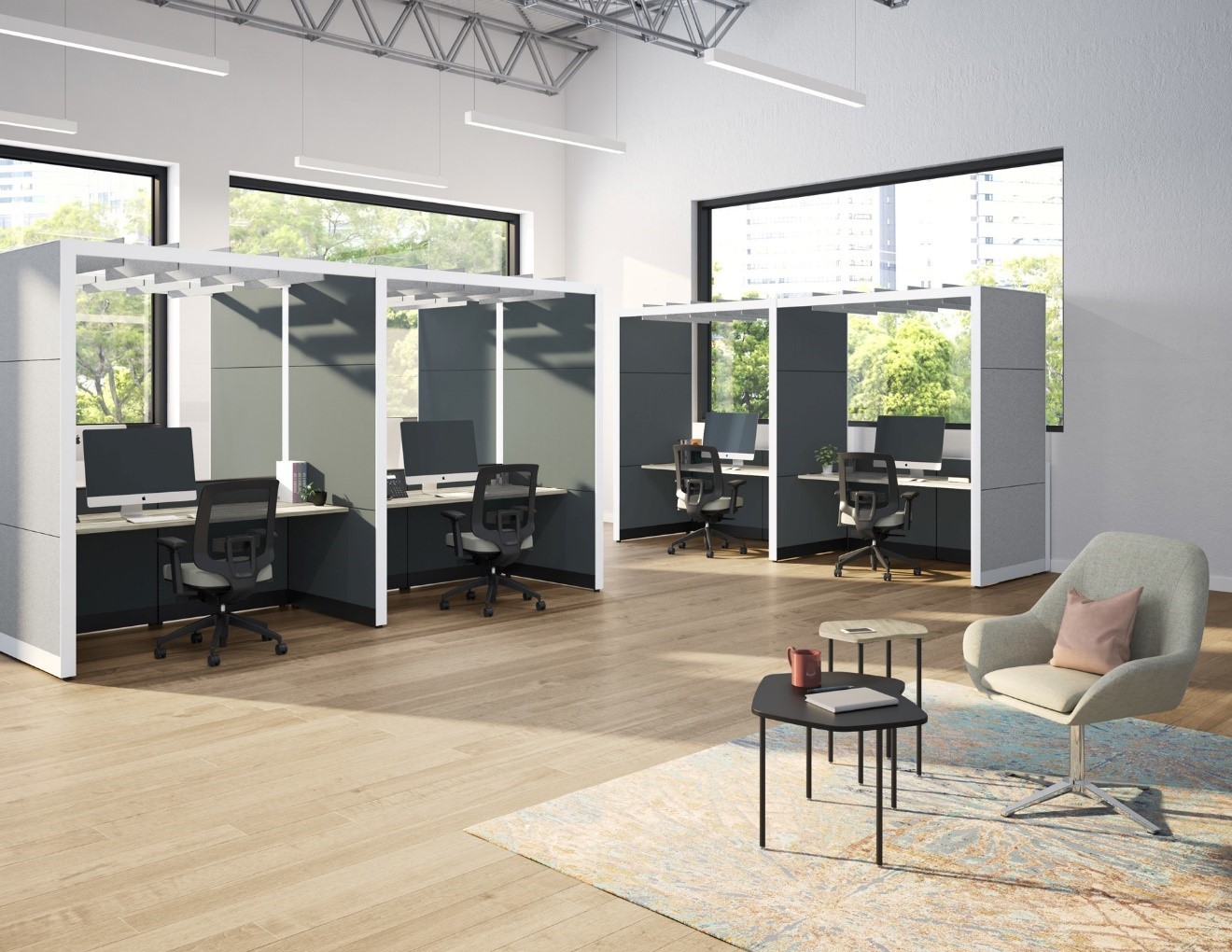
Axel tile systems
Transforming small meeting rooms into individual work desks or mobile offices
Some work environments offer different small meeting rooms designed to accommodate between 2 to 4 people. These meeting rooms could be transformed into closed offices or nomadic workstations (unassigned) for employees who return a few days a week to the workplace.
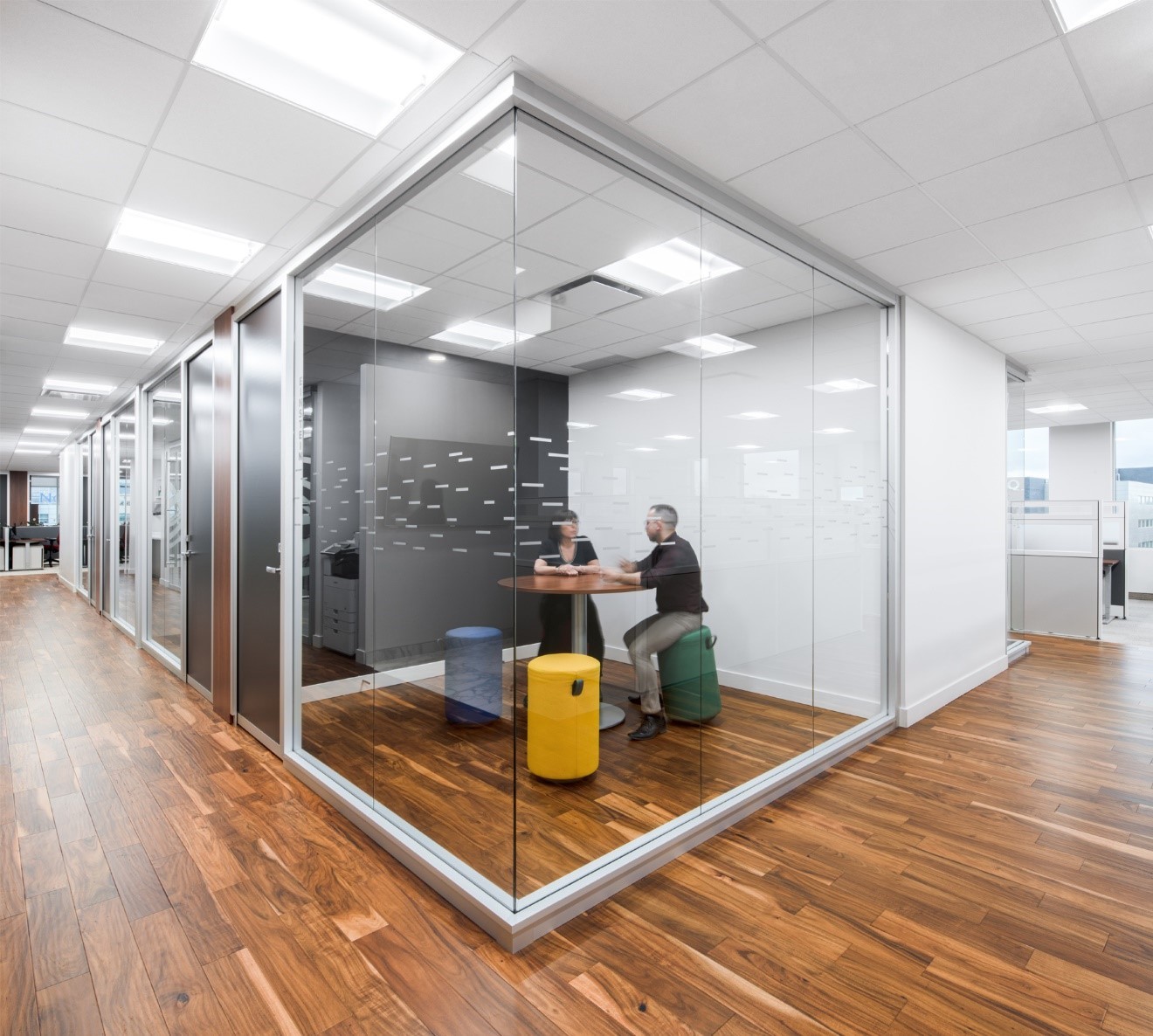
Excelitas, photo by David Boyer
Use pavilions to create safe zones
Our Axel tile system solution allows you to build zones by playing with the frame heights and the various tile finishes offered. You could remedy the problem of social distancing by intersecting the formal workspaces with the pavilions. Multifunctional, these pavilions can accommodate screens and the technology necessary to enable videoconferencing. A suitable solution for combined telework-workplace modes.
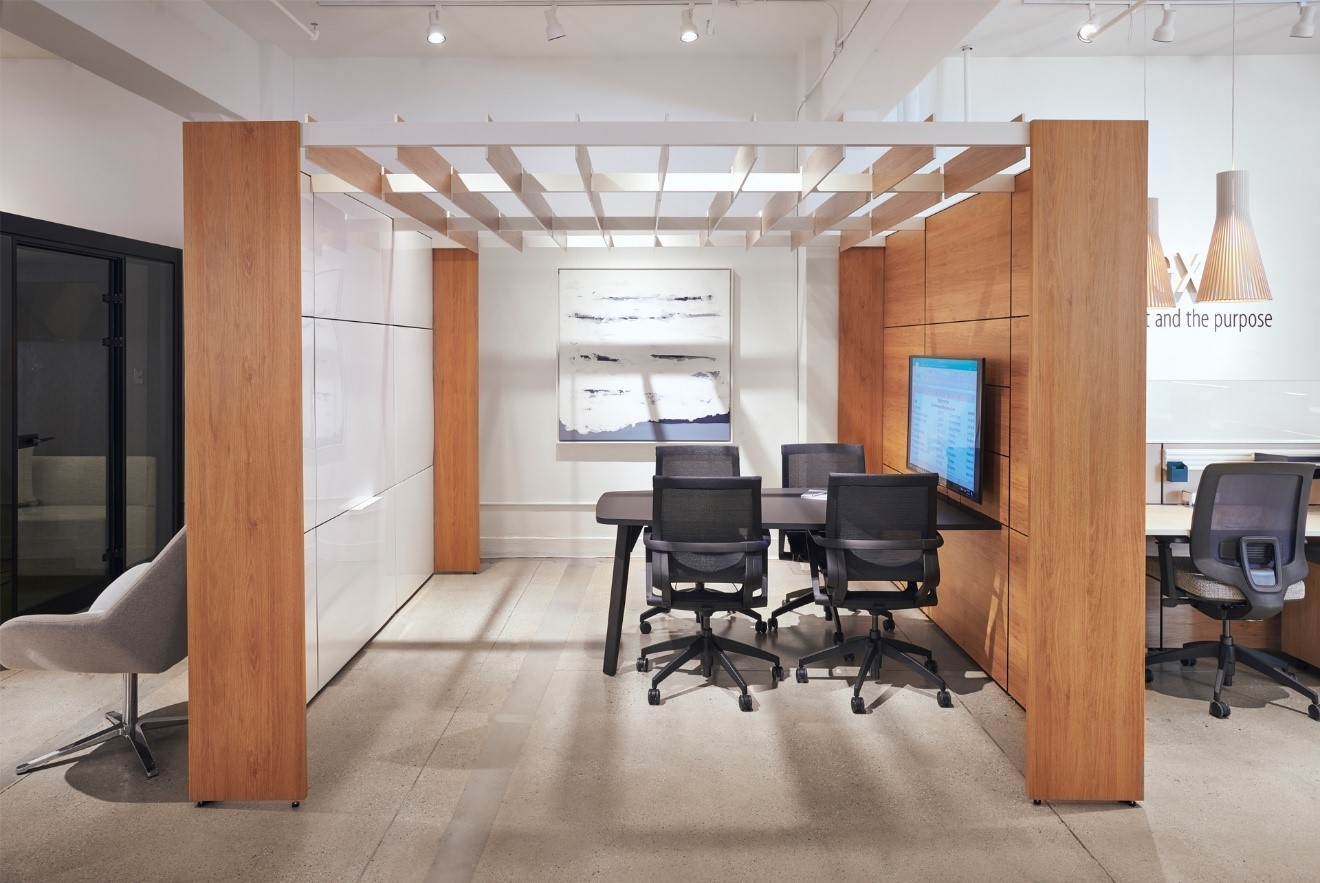
Gibson Interior Products showroom, New York, photo by Andrew Steinman
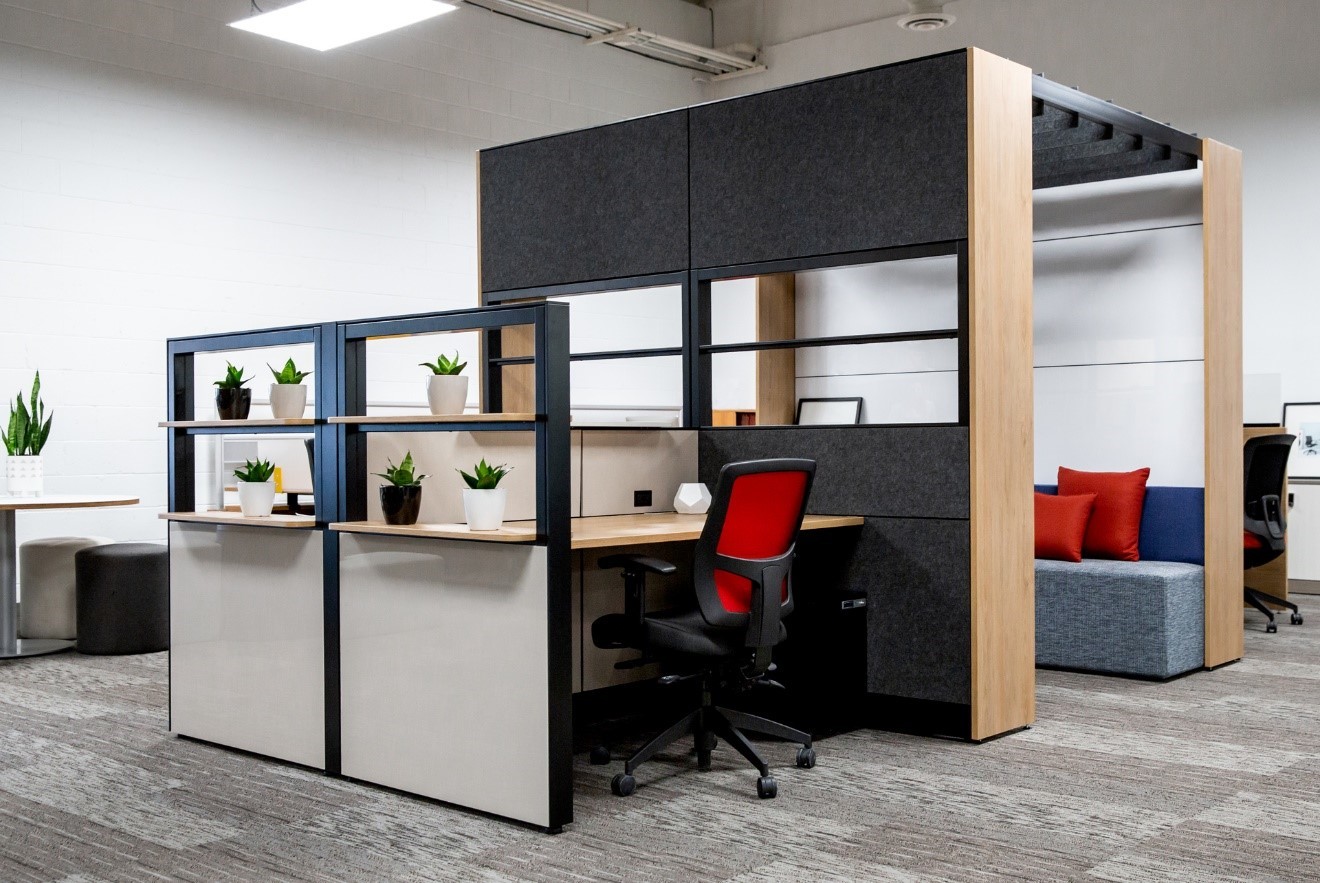
Artopex Calgary showroom, photo by Lindsay Nichols photography
Do you need more inspiration and help to organize your workspaces for the return of your teams? Send us an email at info@artopex.com